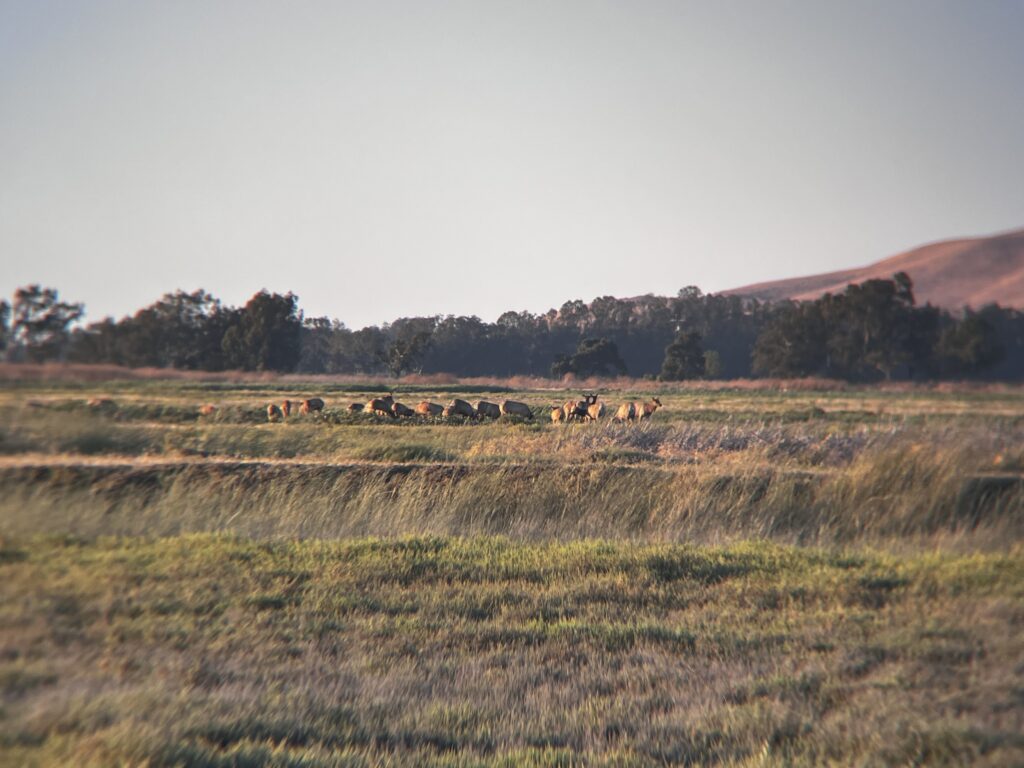News
Meet The Elk
May 7, 2024

By Mike Heine
Elk (Cervus canadensis) are the second largest species of deer in the world and native to a large part of the northern hemisphere. In coastal Northern California there are two native subspecies – the Roosevelt elk, which is the largest, and the endemic tule elk, the smallest.
Much like cows, elk are grazers with four-chambered stomachs. They eat about 20 pounds a day, mainly chowing down on grasses and tree leaf buds. They are a very social animal, forming groups in the several hundreds regularly during the summer mating season. For the rest of the year, elk usually separate into male and female herds and travel in smaller numbers, although old bull elks tend to enjoy their solitude and live alone until the summertime.
Elk have one of the most distinct calls in the mammal world, called a bugle. It’s basically the elk version of yodeling – a high-pitched and shrill call the males make to advertise how strong they are over long distances. During the mating season, known as the rut, males will stand off against each other to compete for the females, using their massive antlers against each other if necessary. Once mated, the females will give birth the following summer. By six months old the calves are the size of an adult white-tailed deer!
The elk population has waxed and waned. At one time, elk were nearly extirpated in California due to overhunting, competition with cattle, and habitat destruction. The tule elk once numbered in the hundreds of thousands throughout the marshes of the Central Valley. Yet in the 1800s they were thought to be extinct until a pair was discovered in the southern Central Valley in the 1870s. Over time, through the impassioned work of conservationists, tule elk have staged a comeback until they number almost 6,000 today.
Roosevelt elk saw the same precipitous declines with just a few hundred left by the turn of the last century. But their status has also changed for the better with hundreds of thousands now reclaiming their range from California all the way to British Columbia.
In the Mendocino County area, you can seek out elk on several trails. According to the Microsoft Copilot, your best chances are at:
- Lake Pillsbury and Eel River lands: These areas are known for their elk populations. There are several trails in these areas where you might spot elk.
- Lost Coast Trail (Sinkyone Wilderness State Park): This rugged, remote 22-mile trail offers breathtaking ocean views, dense forests, and the chance to spot abundant wildlife, including elk.
- Usal Road: The trail accessed from the south by taking Usal Road, off of Hwy 1, is known for its old-growth Douglas fir, majestic Roosevelt elk, and the tiny rare “secret pocket moss”.